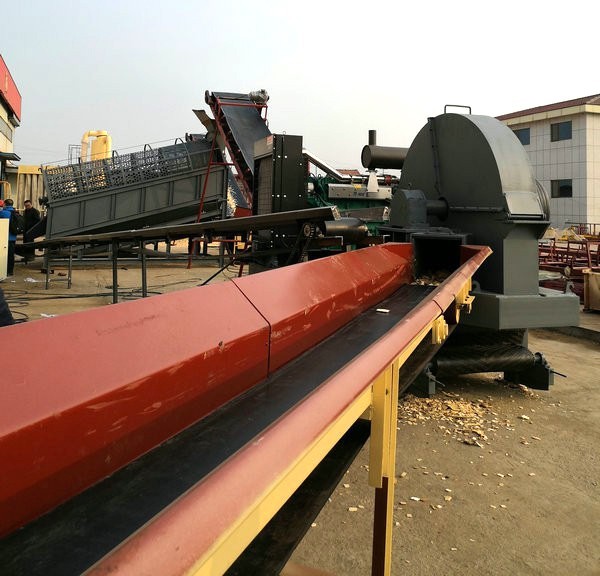The high performance press disc wood chip machine was developed in response to the generally low utilization rate of wood,and is suitable for cutting logs,small diameter logs,branch logs,and tree branches with a diameter of less than 200mm.It is suitable for industries such as pulp mills,forestry farms,paper mills,density board mills,and wood chip mills.The wood cutting machine has effectively improved the utilization rate of waste wood,and many people are concerned about the same issue,which is how to increase the production capacity of the wood cutting machine?How can we solve the problem of the decline in the output of disc wood chip machines?Let's follow the editor below to learn more.

1、Adjust the screen mesh
The size of the sieve determines the screening efficiency.In order to increase the output of the high performance press disc wood chip machine,we can adjust the feeding method and adjust the size of the feeding particles appropriately to improve the output.
2、Increase screen speed
The larger the opening rate,the more material passes through the screening per hour,which is also a very beneficial method to change the screening effect and increase the output of the high performance press disc wood chip machine.
3、Increase the power of the electromechanical cutting machine within an appropriate range
Motor power is the main source of power for screening work and also the main driving force for completing screening work.Appropriately increasing the motor power can increase the output of the high performance press disc wood chip machine.But for materials that are too coarse,too fine,too short,too thin,or irregular,they do not have sufficient uniform cutting function,and only cut the raw materials on the original basis.
The above are three solutions to solve the low output of high performance press disc wood chip machines.These methods can appropriately increase the output of disc wood chip machines and play a key role in improving equipment efficiency.The above method can be used correctly to prevent excessive energy consumption.

 Address:Zibo, Shandong
Address:Zibo, Shandong WhatsApp:+8615805335335
WhatsApp:+8615805335335 Wechat: +8615805335335
Wechat: +8615805335335  E-mail:zs@sdsmachinery.com
E-mail:zs@sdsmachinery.com